When it comes to data enrichment, did you know that organizations that prioritize data quality over quantity experience an average revenue increase of 66%? Six key aspects to understand data enrichment can significantly impact the quality and effectiveness of your data-driven decisions. From identifying key data sources to leveraging advanced technologies, each aspect plays a crucial role in enhancing the value of your datasets. So, are you ready to unlock the full potential of your data through a comprehensive understanding of data enrichment’s key components?
Data Enrichment Definition
Data enrichment is a process utilized to enhance and refine existing datasets by adding new information or attributes to them. One of the key benefits of data enrichment is improving data quality and accuracy, leading to better decision-making. By supplementing datasets with additional details like demographics, preferences, or purchasing history, businesses can gain deeper insights into their customers, allowing for more targeted marketing strategies.
However, data enrichment also comes with its challenges. Ensuring data security and compliance with regulations is crucial when integrating external data sources. Maintaining data integrity throughout the enrichment process is essential to prevent inaccuracies or inconsistencies in the dataset.
Various applications demonstrate the importance of data enrichment. For instance, e-commerce companies use data enrichment to personalize product recommendations based on customer behavior. Similarly, healthcare organizations leverage enriched data to enhance patient care by analyzing medical histories and treatment outcomes. These examples highlight how data enrichment enhances the value and utility of existing datasets.
Importance of Data Enrichment
How does enriching your existing datasets contribute to the overall efficiency and effectiveness of your decision-making processes? Data enrichment plays a crucial role in enhancing data quality and optimizing marketing strategies. Here’s why it is important:
- Enhanced Data Quality: By enriching your datasets with additional information such as demographics, firmographics, and behavioral data, you can ensure that your data is accurate, complete, and up-to-date, leading to more reliable insights for decision-making.
- Improved Targeting: Enriched data allows for better segmentation and targeting of your audience. Understanding customer preferences, behavior, and demographics enables you to tailor your marketing strategies effectively.
- Personalized Marketing Campaigns: Enriched data empowers you to create personalized marketing campaigns that resonate with your target audience, increasing engagement and conversion rates.
- Better ROI: With enriched data driving your marketing strategies, you can make more informed decisions, allocate resources efficiently, and ultimately achieve a higher return on investment.
Data Enrichment Process
Let’s now explore the Data Enrichment Process, focusing on its benefits, key data sources, and automation techniques. Understanding the advantages of data enrichment, the sources where valuable information can be extracted, and the methods used to streamline the enrichment process are crucial aspects to consider. By delving into these points, you can gain a comprehensive understanding of how to effectively enhance your data for improved decision-making and insights.
Data Enrichment Benefits
Enhancing the quality and value of your existing data through the process of data enrichment can yield a multitude of advantages for your organization. By enriching your data, you can:
- Gain Enhanced Insights: Data enrichment allows you to fill in gaps in your existing data, providing a more comprehensive view of your customers, their behaviors, and preferences. This leads to better decision-making and strategic planning.
- Enable Improved Targeting: With enriched data, you can segment your audience more effectively based on various criteria such as demographics, interests, and past interactions. This targeted approach enhances the relevance of your marketing campaigns and increases the likelihood of conversion.
- Enhance Personalization: Enriched data enables you to create more personalized experiences for your customers, fostering stronger relationships and increasing customer loyalty.
- Improve Operational Efficiency: Enriched data streamlines processes by providing accurate and up-to-date information, reducing errors and saving time on manual data handling tasks.
Key Data Sources
By enriching your data, you have already laid the foundation for an improved understanding of your customers and operations. Key data sources play a crucial role in the data enrichment process. Identifying and utilizing the right sources is essential for enhancing the quality and depth of your data. However, this process comes with its own set of challenges.
Data enrichment challenges often revolve around the availability and reliability of the data sources. Ensuring that the sources are up-to-date, accurate, and relevant can be a significant hurdle. Moreover, integrating data from multiple sources while maintaining consistency and relevance poses another obstacle. To overcome these challenges, organizations must implement effective data enrichment strategies.
Data enrichment strategies involve leveraging a combination of internal and external data sources, utilizing advanced technologies like machine learning and artificial intelligence, and establishing robust data governance practices. By employing these strategies, companies can enhance their data quality, gain valuable insights, and drive informed decision-making. Successful data enrichment relies on a careful selection of key data sources and the implementation of effective strategies to overcome associated challenges.
Automation Techniques
To streamline and optimize the data enrichment process, automation techniques play a pivotal role in augmenting efficiency and accuracy. Implementing automation can address various data enrichment challenges and enhance the overall process. Here are four key benefits of automation techniques in data enrichment:
- Increased Efficiency: Automation helps in speeding up the data enrichment process by reducing manual tasks, allowing for quicker turnaround times.
- Enhanced Accuracy: Automation minimizes the chances of human errors, ensuring that the enriched data is more reliable and precise.
- Scalability: Automated processes can easily handle large volumes of data, making it easier to scale up enrichment efforts as needed.
- Cost-Effectiveness: By reducing manual intervention and the associated labor costs, automation proves to be a cost-effective solution for data enrichment tasks.
Data Enrichment Techniques
Data enrichment techniques play a crucial role in enhancing the quality and value of your data. By utilizing methods such as data augmentation and information enhancement, you can enrich your existing datasets to derive more insights and make better-informed decisions. Data augmentation involves adding new data points or attributes to your dataset, filling in missing information, or correcting errors to create a more comprehensive and accurate dataset. On the other hand, information enhancement focuses on improving the quality of existing data by enriching it with additional context, metadata, or external sources of information.
These techniques help in transforming raw data into a more valuable asset for your business. Data enrichment not only improves the accuracy and completeness of your data but also enhances its relevance and usability. By leveraging these techniques effectively, you can unlock hidden patterns, trends, and relationships within your data, leading to more impactful analysis and decision-making processes.
Data Enrichment Tools
When exploring the realm of data enrichment tools, one must consider the diverse array of options available to enhance the quality and depth of your datasets. These tools play a crucial role in overcoming data enrichment challenges and implementing data enrichment best practices. Here are four key aspects to keep in mind:
- Data Quality Enhancement: Tools like Trifacta and Talend provide functionalities for cleaning and standardizing data, ensuring that your datasets are accurate and reliable.
- Data Augmentation: Platforms such as Clearbit and FullContact offer data enrichment services that append additional information to existing datasets, enriching them with valuable insights.
- Automation Capabilities: Tools like Alteryx and Informatica enable automation of data enrichment processes, saving time and reducing manual errors.
- Integration Flexibility: Consider tools like D&B Hoovers and ZoomInfo that offer seamless integration with various data sources, allowing for a comprehensive enrichment of datasets from multiple channels.
Data Enrichment Services
Amidst the landscape of data enrichment, services play a pivotal role in amplifying the value and depth of your datasets. Data enrichment services offer specialized solutions to enhance the quality of your existing data through various data enrichment strategies. These services utilize advanced algorithms and technologies to cleanse, validate, and enrich your datasets with additional information such as demographics, firmographics, and behavioral data.
Frequently Asked Questions
How Can Data Enrichment Improve Customer Retention Rates?
To boost customer retention rates, data enrichment enables precise customer segmentation. By leveraging predictive modeling, you can understand customer behavior, preferences, and needs better. Tailoring offerings based on enriched data fosters stronger customer relationships and enhances retention.
What Are the Potential Risks of Data Enrichment?
Data enrichment poses risks to your organization. Data security breaches can expose sensitive information. Ethical considerations must guide your actions. Be vigilant in safeguarding data to maintain trust and avoid potential legal and reputational consequences.
Is Data Enrichment Compliant With Data Privacy Regulations?
Yes, data enrichment must comply with data privacy regulations to avoid legal implications. It’s crucial to consider ethical considerations when enriching data. Ensure that all enrichment processes align with relevant laws and ethical standards to safeguard privacy.
Can Data Enrichment Be Used for Real-Time Data Analysis?
Can data enrichment be the key to real-time insights? Yes, it can! By enhancing your data with up-to-date information, you enable dynamic analytics, empowering you to make informed decisions swiftly and accurately.
How Can Data Enrichment Impact Decision-Making Processes?
Data enrichment enhances decision-making by providing enriched data for analysis. It enables you to uncover valuable insights, improve data visualization for better understanding, and enhance business intelligence. Ultimately, it optimizes your decision-making processes for better outcomes.




